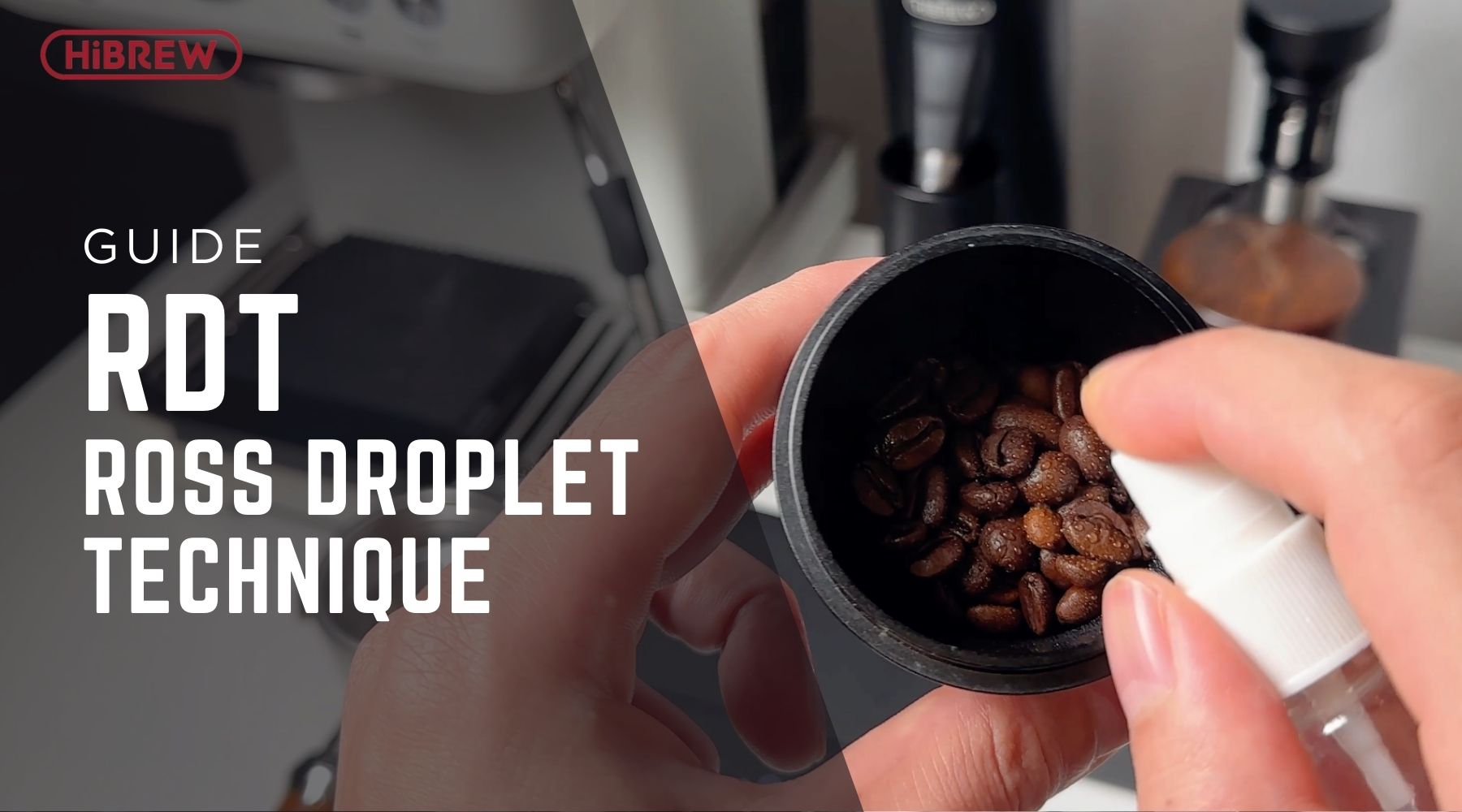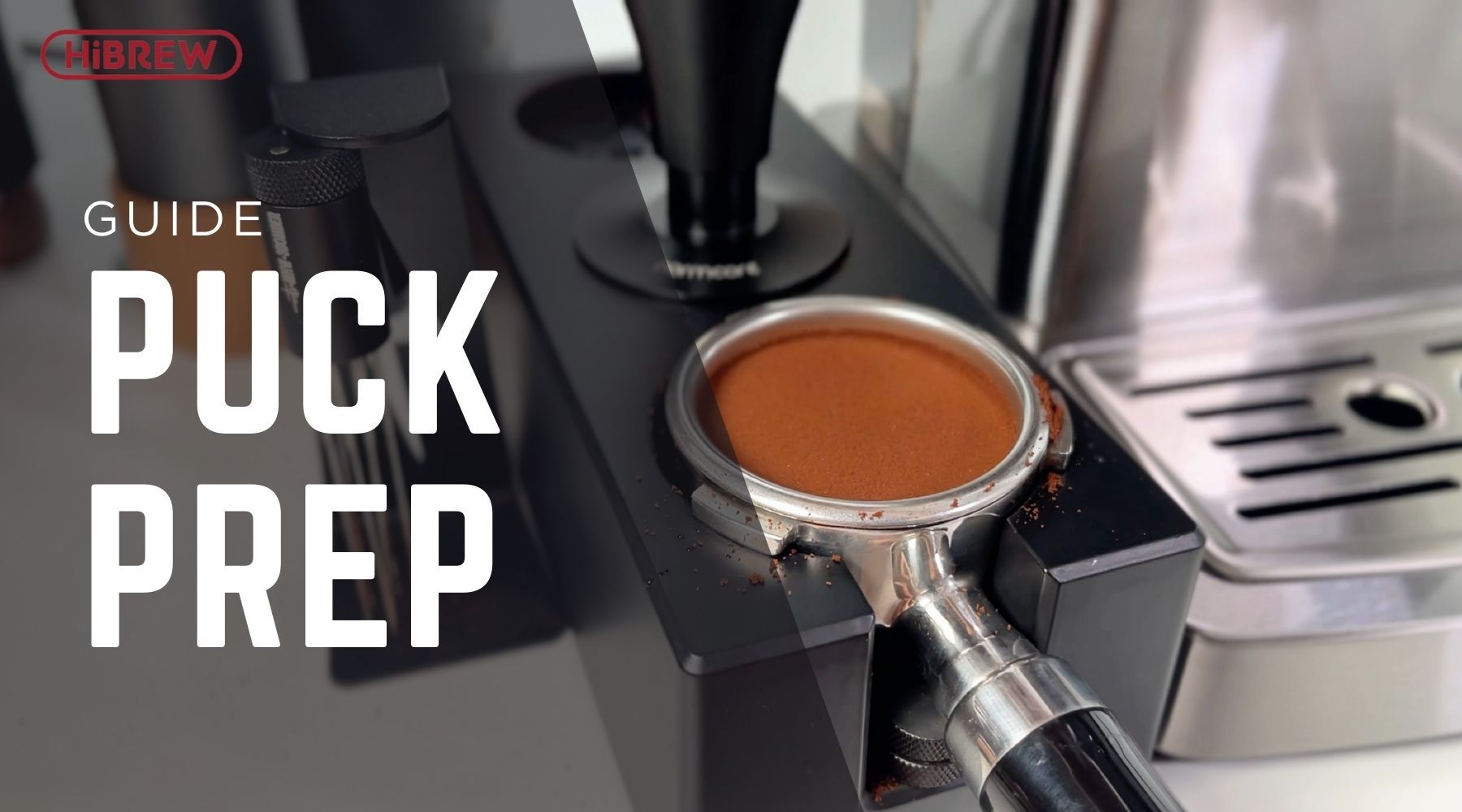Have you ever seen a barista stirring the grounds before tamping? That's the Weiss Distribution technique, also called 'WDT'. It's a simple but effective trick to make better espresso.
What is the WDT (Weiss Distribution Technique)?
The Weiss Distribution Technique, commonly known as WDT, is a method of preparing coffee grounds for espresso extraction by evenly distributing them in the portafilter basket before tamping.
Developed by John Weiss in the early 2000s, this technique involves using thin needles to stir and break up clumps in the coffee grounds.
The concept behind WDT is straightforward: by ensuring even distribution of coffee grounds, water flows more uniformly during extraction, promoting consistent flavor and reducing the likelihood of channeling – those pesky streams of water that find the path of least resistance through your coffee puck, resulting in under-extracted, sour shots.

Understanding WDT Tools
A WDT tool is a simple device consisting of fine needles (typically between 0.1-0.5mm in diameter) attached to a handle. While the original technique used a single dissection needle, modern WDT tools often feature multiple acupuncture or similar fine needles arranged in a pattern that allows for efficient stirring of the coffee grounds.
Many coffee equipment manufacturers also introduced more complicated distribution tools, such as the rotary WDT tools, and more high-end products. However, the primary function of a WDT tool is to break up clumps in your coffee grounds caused by static electricity during grinding and to ensure even distribution throughout the portafilter basket.

You can definitely choose a cheap and simple one with a few needles, the fancy ones may be more suitable for professional baristas who need to do the puck prep faster.
The New HiBREW H4C Barista Ultra version also offers a WDT tool, a dosing ring and a solid tamper in the box so that you can perform better puck prep for your bottomless shot.

Step-by-Step WDT Method
To perform the Weiss Distribution Technique effectively, you'll need:
- A WDT tool (commercial or DIY)
- A dosing ring/collar (highly recommended to prevent mess)
Detailed Process
Follow these steps to implement WDT in your espresso preparation:

- Grind and Dose: Grind your coffee directly into the basket with the dosing collar attached.
- Apply WDT: Insert the needles of your WDT tool into the coffee grounds and gently stir in a circular or back-and-forth motion. You can go all the way down to the bottom of the basket if you don't mind scratching it. Ensure you reach all areas of the basket, including the bottom and edges. Focus on breaking up any visible clumps while distributing the grounds evenly throughout the basket.
- Complete Distribution: Continue stirring for 15-20 seconds, working from the bottom to the top of the coffee bed. The goal is to create a fluffy, even bed of coffee grounds with no visible clumps and a flat surface.
- Optional Knock Down: Some baristas gently tap the portafilter on a tamping mat to slightly compact the coffee bed before tamping. This step is optional but can help achieve more consistent results.
- Level and Tamp: Remove the dosing collar, level the coffee bed if needed, and tamp as usual, applying consistent pressure to create a flat, even surface.
- Extract Your Espresso: Insert the portafilter into your machine and pull your shot.
With proper WDT and tamping, the coffee liquid won't be spraying around even when using a bottomless portafilter.
Common Mistakes to Avoid
- Being Too Aggressive: Gentle stirring is all that's needed; aggressive movements can create new distribution problems.
- Skipping the Dosing Collar: Without a dosing collar, coffee grounds will likely spill over the edges during WDT, creating mess and inconsistency.
- Using Needles That Are Too Thick: Needles thicker than 0.5mm tend to move and compress the grounds to create more clumps rather than breaking up clumps effectively.
Why WDT Matters for Espresso - The Benefits
Even high-end grinders can produce clumpy coffee grounds, especially when single-dosing. These clumps create density variations in your coffee puck, leading to:
- Channeling (water finding the path of least resistance)
- Uneven extraction (some areas over-extracted, others under-extracted)
- Inconsistent flavor profiles from shot to shot
- Visible spraying or "spurting" when using bottomless portafilters

Benefits of Using WDT
Implementing the Weiss Distribution Technique in your espresso workflow can solve the problems mentioned above.
- More Consistent Extraction: By breaking up clumps and ensuring even distribution, WDT promotes uniform water flow through the coffee puck, resulting in more balanced extraction.
- Reduced Channeling: The even distribution achieved through WDT significantly decreases the risk of channeling, resulting in visually appealing, steady extractions with bottomless portafilters.
- Better Shot Consistency: WDT helps achieve more predictable results from shot to shot, making it easier to dial in your espresso and maintain quality over time.

Conclusion
The Weiss Distribution Technique represents one of the most significant yet accessible improvements you can make to your espresso preparation. While it adds approximately 15-25 seconds to your workflow, the dramatic improvements in consistency, flavor, and extraction quality make it well worth the effort.




Hinterlasse einen Kommentar
Alle Kommentare werden vor der Veröffentlichung geprüft.
Diese Website ist durch hCaptcha geschützt und es gelten die allgemeinen Geschäftsbedingungen und Datenschutzbestimmungen von hCaptcha.